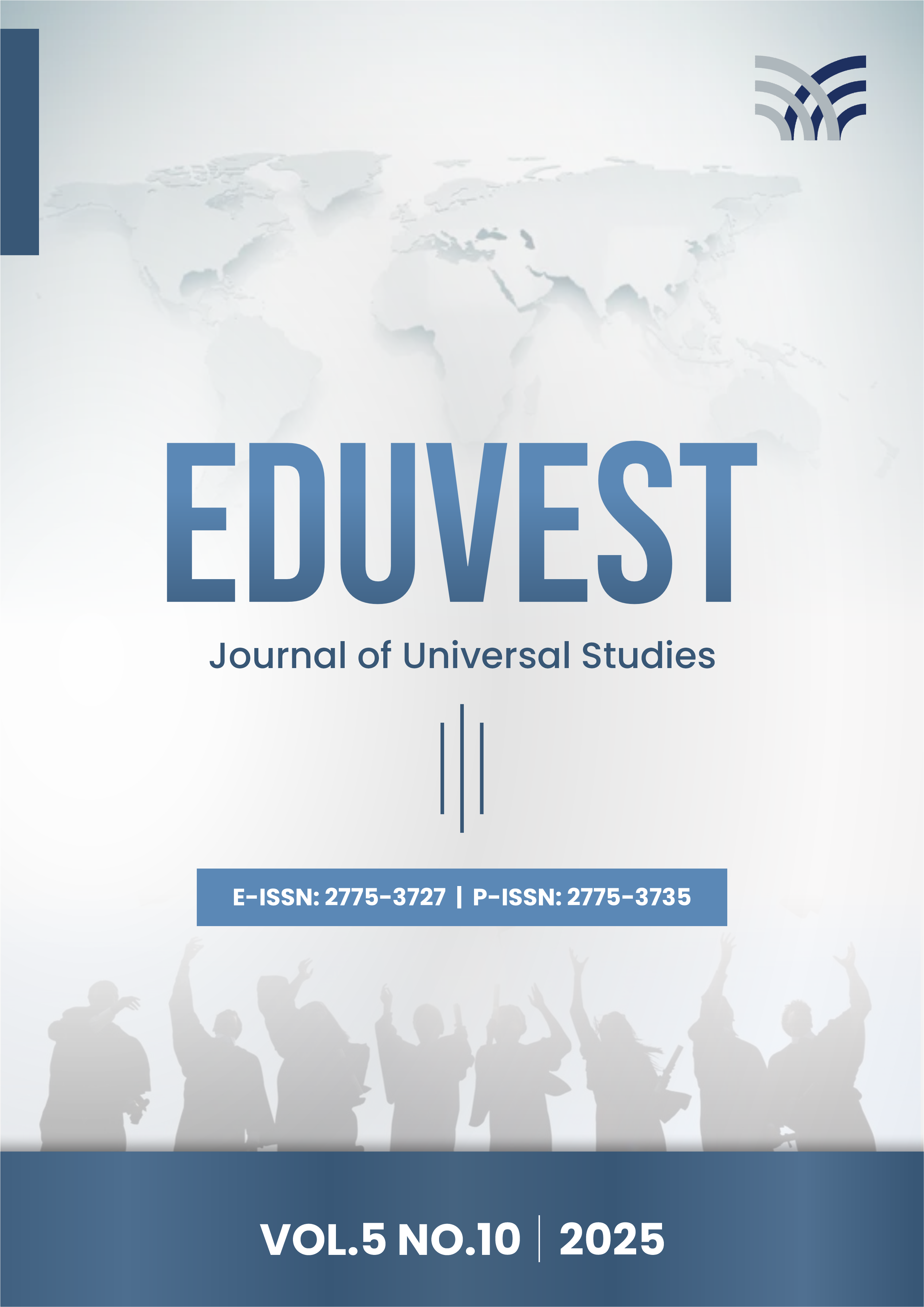Explaining Youth Online Disaster Risk Information Seeking In Disaster-Prone Areas: A Case of an Indonesian Coastal Community
DOI:
https://doi.org/10.59188/eduvest.v5i10.51846Keywords:
disaster preparedness, information seeking, youth, RISP model, risk communicationAbstract
This study tested the utility of the Risk Information Seeking and Processing (RISP) model in explaining disaster risk information-seeking intentions among rural youth in Indonesia. Participants (N = 98) completed a survey measuring RISP constructs, including information insufficiency, perceived hazard characteristics, affective response, informational subjective norms, perceived information gathering capacity, and behavioral beliefs. Regression analysis showed that perceived hazard characteristics (β = 0.114, p < .05) and informational subjective norms (β = 0.344, p < .001) were significant predictors of information-seeking intention, while affective response and behavioral beliefs were not significant (p > .05). The RISP model explained 23.6% of the variance in information-seeking intention (R² = 0.236, Adjusted R² = 0.203). Adding gender as a random effect slightly improved model fit (Conditional R² = 0.267), but gender accounted for minimal variance. These findings extend the RISP model to a high-risk, underrepresented population and provide important theoretical and practical insights for designing targeted risk communication strategies to enhance disaster preparedness among youth.
Downloads
Published
How to Cite
Issue
Section
License
Copyright (c) 2025 Amelia Putri, Dicky Chresthover Pelupessy

This work is licensed under a Creative Commons Attribution-ShareAlike 4.0 International License.











